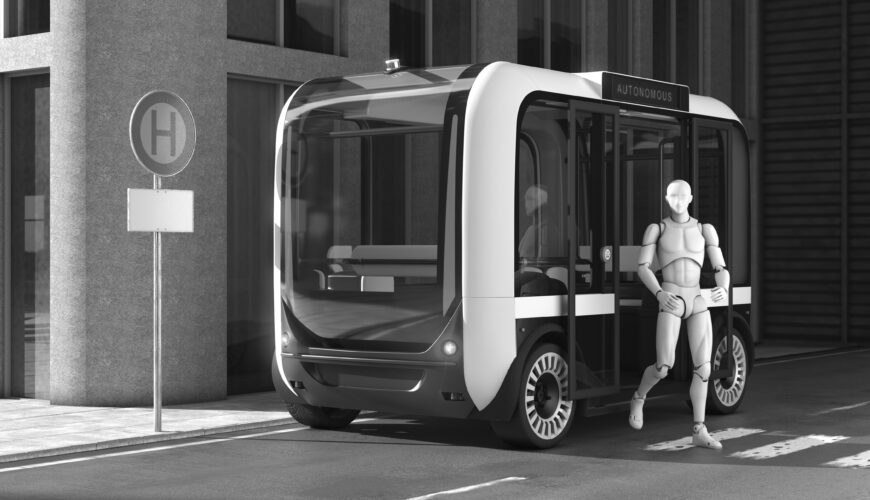Autonomous ride-hail services are reshaping the transportation landscape as we know it. Companies such as Honda, GM, Cruise, Zoox, and others are at the forefront of this technological revolution, offering a glimpse into the future of mobility. In this article, we’ll explore the evolution of autonomous ride-hailing services and the key players driving this transformation. OPSdesign Consulting has been chosen by one of the major technology leaders to design their warehousing and assembly operations.
The Road to Autonomy
Autonomous ride-hail services have been in development for several years, with numerous companies racing to perfect the technology. GM’s subsidiary, Cruise, is one of the pioneers in this field. Established in 2013, Cruise has been relentless in its pursuit of autonomous driving solutions. With extensive testing on the busy streets of San Francisco, they’ve made significant strides in perfecting self-driving cars.
Honda, another automotive giant, is also making its mark in the autonomous ride-hail arena. In 2018, they invested $2.75 billion in Cruise, forging a strategic partnership to accelerate the development of autonomous vehicles. This collaboration has allowed Honda to tap into Cruise’s advanced technology and autonomous expertise.
GM’s Cruise: Pioneering Autonomous Ride-Hail Services
GM’s Cruise has made remarkable progress in the autonomous ride-hailing sector. The company’s autonomous vehicles are equipped with cutting-edge technology, including LiDAR sensors, radar, and cameras, which provide a comprehensive view of the surrounding environment. Cruise has also been granted permits to test autonomous vehicles without human backup drivers in California, a testament to the safety and reliability of their technology.
Honda’s Ambitious Leap into Autonomous Ride-Hail Services
Honda’s partnership with Cruise has been a pivotal move in their pursuit of autonomous ride-hail services. Their commitment to investing billions of dollars underscores their ambition. With Cruise’s technology and Honda’s manufacturing capabilities, the duo aims to bring fully autonomous ride-hail vehicles to market on a large scale, transforming urban mobility.
Zoox: Reimagining Mobility
Zoox, an Amazon-owned autonomous vehicle company, has a different approach to autonomous ride-hail services. Rather than retrofitting existing vehicles, Zoox is developing purpose-built, autonomous electric vehicles from the ground up. These vehicles are designed for both passenger and goods delivery. With a focus on urban environments, Zoox envisions a world where people can summon a vehicle for a ride or to transport goods conveniently and efficiently.
Competitive Landscape
The autonomous ride-hailing sector is highly competitive, with various companies vying for a slice of the market. Tech giants like Waymo and traditional automakers such as Ford are making substantial investments in autonomous technology. Waymo, a subsidiary of Alphabet Inc., is known for its extensive testing and autonomous ride-hail pilot programs. Meanwhile, Ford is actively working on developing its autonomous ride-hail services under the Ford Smart Mobility division.
The Future of Autonomous Ride-Hail Services
The deployment of autonomous ride-hailing services promises numerous benefits. These services have the potential to reduce traffic congestion, decrease accidents caused by human error, and provide accessible transportation to those who cannot drive. Moreover, they may reduce the need for car ownership, leading to a more sustainable future with fewer vehicles on the road.
Regulatory and Ethical Challenges
However, the path to fully autonomous ride-hail services is not without its challenges. Regulatory hurdles, safety concerns, and ethical questions surrounding autonomous technology remain critical issues to address. Ensuring the safety of passengers and pedestrians is paramount, and regulatory bodies are working to establish guidelines for autonomous vehicle deployment.
The Role of Artificial Intelligence
At the core of autonomous ride-hail services is artificial intelligence (AI). Machine learning and deep neural networks enable autonomous vehicles to perceive and respond to their environment. Ongoing advancements in AI algorithms and hardware are crucial for enhancing the safety and efficiency of autonomous transportation.
Conclusion
The advent and deployment of autonomous ride-hail services are changing the way we view transportation. Companies like Honda, GM, Cruise, Zoox, and others are at the forefront of this transformation, pushing the boundaries of technology and reshaping urban mobility. While challenges remain, the promise of safer, more convenient, and environmentally friendly transportation is a compelling vision for the future.
As technology continues to advance and regulatory frameworks evolve, we can expect autonomous ride-hail services to become an integral part of our daily lives, providing a new level of convenience and efficiency in urban transportation.
OPSdesign has been privileged to work collaboratively with one of the market leaders, designing their warehousing and assembly operations for over-the-road autonomous mobile vehicles. We are proud to have been chosen to help launch this game-changing transportation technology.


